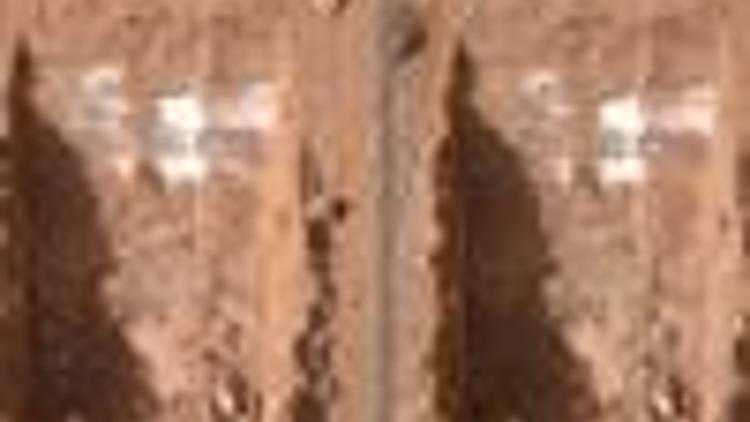Phoenix lander confirms presence of ice on Mars
Güncelleme Tarihi:

Scientists rejoiced Friday after the Phoenix Mars Lander confirmed their long-held belief that ice is hiding under the surface in the Red Planets northern region.
The Lander’s robotic arm started digging trenches into Martian soil after touching down near the planets North Pole on May 25, revealing a white substance that scientists had said could be either salt or ice.
When the Lander took new photographs of the trench four days later on Thursday, the material had vanished, settling the debate about whether it was salt or ice.
Scientists at the Jet Propulsion Laboratory in
"We found what we were looking for,"
Scientists believed that a vast sheet of ice was hiding in the planets North Pole after NASA’s Mars Odyssey surveyed it in 2002.
"If you had a big broom and swept this area off, we are on an ice sheet," said Phoenix Principal Investigator Peter Smith of the
"We have found the proof that we have been seeking that showed that this bright material really is water ice, and not another substance," Smith said.
"Now we know for sure that we are on an icy surface and we can really meet the science goal of our mission at the highest level," he said.
Besides evidence of water, the three-month
The probe is equipped with oven-like instruments that can melt any ice collected by the robotic arm and analyze the water.
The trick, Smith said, is for
"Just the fact that there’s ice there doesn’t tell you if it’s habitable," he said.
"With ice and no food its not a habitable zone. We don’t eat rocks. We have to have carbon chain materials that we ingest into our bodies to create new cells and give us energy. That’s what we eat and that’s what has to be there if you’re going to have a habitable zone on Mars."
Water filtered down on Mars may have left its mark on surrounding minerals, and impurities in the ice could tell a great deal about the climactic history of this region of the planet.
Mars is currently too cold for liquid water but it is possible that in some distant past the
Water is a main ingredient for life and the polar region at some point may have been habitable: that is a puzzle
"We have dug a trench and uncovered a hard layer at the same depth as the ice layer in our other trench," said Ray Arvidson of
After trying to crack further into it, the arm became immobilized, which is the expected programmed reaction for when it hits a hard surface.
Photo: Reuters

